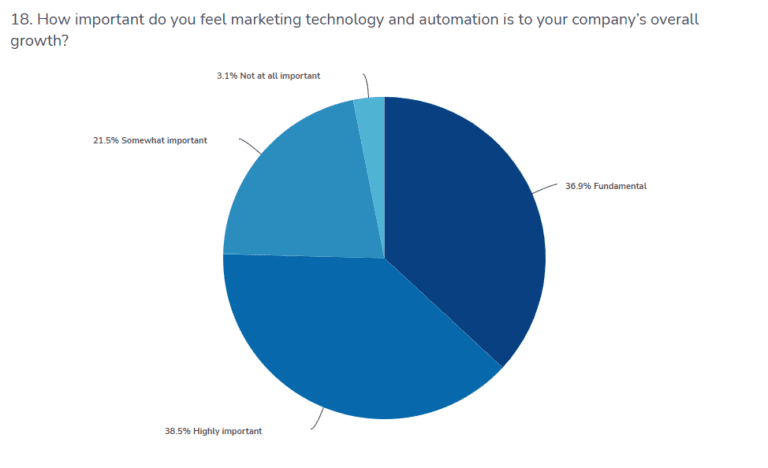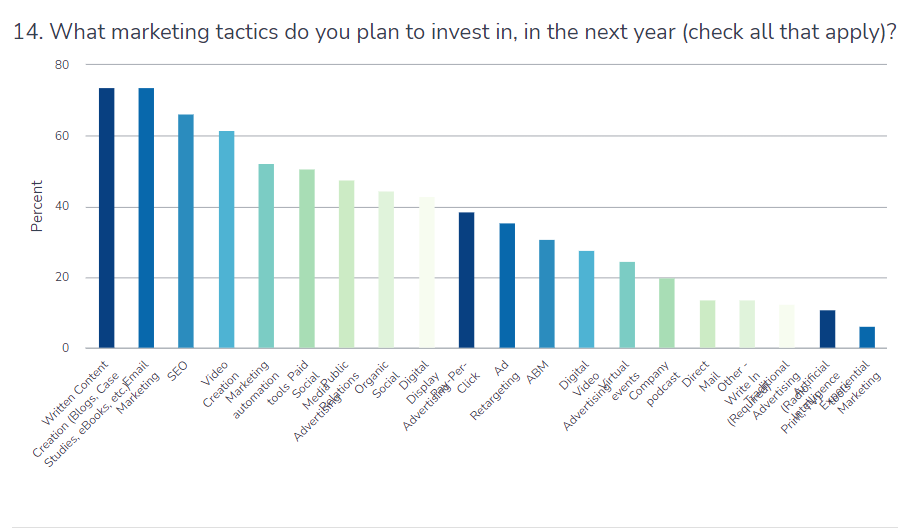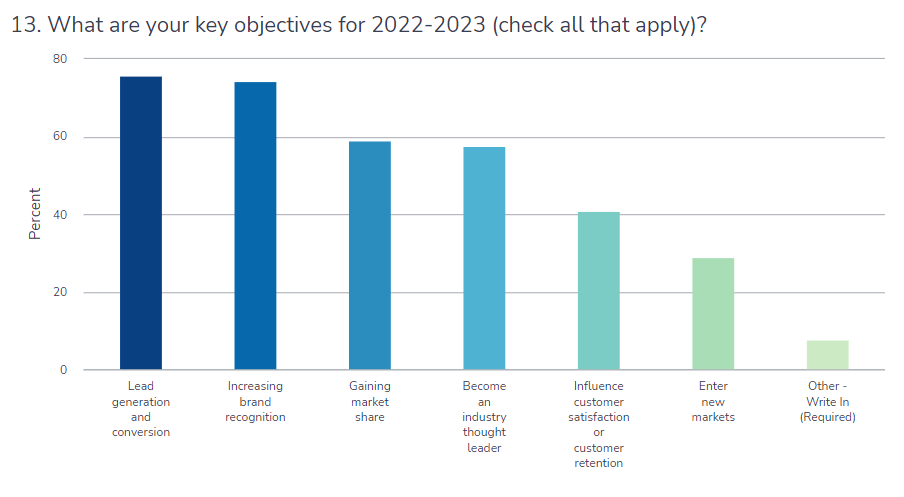
3 Strategies Your Supply Chain Marketing Peers are Planning for in 2023
The new year is fast approaching, and supply chain marketers are looking for ways to connect with their audience on a more personal level.
Results from our recent industry survey revealed that marketers are investing in marketing automation and focusing on converting more marketing-qualified leads (MQLs) into sales-qualified leads (SQLs). So how will they do it? Here are a few areas marketers are looking to tackle.
#1. Implementing New Marketing Technologies
The Content Marketing Institute report says that just 28% of respondents believe they have the right technology to manage content across their organizations. More than 60% report needing the right technology, or having the technology but not using it to its full potential.

Most companies we surveyed reported being fast followers of new marketing technology, eager to pick up new ideas and innovations. About the same amount of companies said they fell in the middle of the pack. These companies are interested in new technology, but may want more information before integrating it into their systems.
Even with new marketing technology innovations coming on the scene to help marketers optimize their efforts, the Gartner 2022 Martech Survey: New Insights to Maximize ROI report found that only 42% of marketers surveyed were using marketing technology stacks to their full potential. That percentage is down from the 2020 rate of 58%.
Forbes shares some of the biggest tech trends transforming marketing:
- Artificial Intelligence-driven marketing solutions such as social media advertising, more sophisticated chatbots, and additional interactivity for customers.
- The Metaverse, consisting of an interconnected, ongoing digital reality with virtual, augmented, and mixed realities in one.
- Micro-moments and hyper-personalization can be used as tools for enhanced measuring and predicting customer behaviors.
- Cookies are going away. Cookies were code embedded onto computers by websites to track behavior. Soon, alternative tracking measures will be available with different levels of support.
- Hybrid events are becoming more popular, with attendees having the option to attend in person or through a virtual platform. As meeting platforms develop, more features allow remote audiences to explore and interact with the events in new ways.
In our experience working with our clients, here are a few new tools, specifically in supply chain technology and transportation, we see companies investing in today:
- Marketing automation – it goes without saying that a tool like HubSpot is invaluable for keeping lead scoring, conversion tracking, email marketing, and CRM data all in one place.
- AI copywriting – A tool like JasperAI may not always hit a home run with writing content from scratch, but it can save you time by spinning out shorter-form content from long-form writing like blogs, emails, and social media posts.
- Chatbots – calling OpenAI’s GPT-3 (you may hear it referred to as Chatgpt) a chatbot may insult the AI language generator tool. While the tool is accessible to all through a “free research preview” at the time of writing, GPT-3 may have several use cases for marketers – providing human-like, engaging, personalized content for target audiences or acting as a much more sophisticated and helpful chatbot then we’re all used to.
- Intelligent content journeys – Our clients love PathFactory, which serves customized content depending on a visitor’s activity.
- Customer experience – Platforms like Ask Nicely make it easy to measure customer feedback and collect real-time NPS.
- Sales enablement and alignment – A tool like Seismic can help sales serve up the most relevant, up-to-date content and allow marketing to understand which messages and pieces of content are being utilized and converted.
- Sales engagement – Clients use platforms like Salesloft to orchestrate multi-channel messages to engage prospects.
- Social media scheduling and listening – A social media tool like Hootsuite makes it easy to analyze social results, schedule messages, and even monitor your brand all in one platform.
Next Steps: To decide which tools may be worth adding to your tech stack, use your company’s top-line business objectives as your guiding light. Where can marketing add value by collecting more data, optimizing, or implementing something new? And, remember to revisit the tools you have to ensure the functionality doesn’t already exist.
#2. More Content Generation and Engagement
Our survey results show supply chain marketers also plan to invest more in written content creation, email marketing, search engine optimization (SEO), and video creation, which correlates to HubSpot’s 2023 Marketing Strategy + Trends Report results. The report says the top trends amongst all marketers are using short-form video, mobile-friendly web design, brand-centric content, and personalized social media outreach.

Key insight: People with more years of marketing industry experience more often reported planning to invest in marketing automation tools (Spearman correlation = .269).
Companies we surveyed with larger marketing budgets listed account-based marketing (ABM), digital video advertising, direct mail, and paid social media advertising as marketing tactics they plan to invest in sooner than later. The State of Marketing Report from Salesforce said B2B marketing organizations are allotting at least 15% of their budget to ABM because of its tie to personalized messaging and engagement.
Marketers are also looking towards thought leadership to increase engagement with target audiences. Forbes says although more than half of the world uses social media, with over 130 social media channels available to the public, it is impossible to have a consistent presence on all of them. However, social media is a great outlet to establish yourself as an industry leader. From insightful commentary to live videos, thought leadership through social media is one investment at the top of marketers’ minds everywhere.
Next Steps: To make sure your content strategy aligns with your audience, revisit your supply chain personas or take the time to update them. What messages resonate with your target audience? What pieces of content might be missing in which stages of the funnel? Where will you reach your audience? These questions help you create the path forward, deciding what content to create and where to deploy it.
#3. Lead Generation and Conversions

Companies most often reported increasing brand recognition, lead generation, and conversions as key objectives for 2022-2023. Becoming an industry thought leader and gaining market share was also reported often.
Our survey found that companies with larger marketing budgets plan to focus their efforts more on lead generation and conversion as they use more digital and personalized tactics to influence their audiences. These companies focus on gaining qualified leads through their marketing efforts and converting potential customers into sales-qualified leads (SQLs). These conversions and the cost per acquisition are top of mind for companies with bigger marketing budgets.
The Content Marketing Institute report says aligning content efforts across sales and marketing helped generate leads for 65% of the marketers surveyed. Gartner reported marketing leaders are using the number of MQLs passed on to their sales department as one of the most critical indicators of demand generation success. Gartner also said this newer hyperfocus on generating more MQLs creates a pigeonhole for marketers looking to diversify their efforts. Though a CMO may see MQL generation as a plus, other departments may not see it as a top way to support a sales team’s bottom line. An engaged lead does not necessarily make them “qualified.”
According to Salesmate, digital lead generation in the U.S. will reach more than $3 billion in 2023. Marketers find lead generation one of the most challenging tasks in their jobs and are looking to focus more on the quality of leads in 2023 over quantity. Salesmate also reported personalization during lead nurturing enhances the chances of a conversion by more than 60%. Email marketing, which is also likely to increase in use in 2023, is a top lead generation choice for nearly 90% of marketers.
Next Steps: Are you aligned with sales on what they consider a “quality lead”? It’s time to have more regular conversations with your sales team to hone your targets and lead scoring. Get more informed on their approach. Additionally, you should understand your conversion rates from each stage and the average number of days it takes to convert from one step to the next. Armed with these benchmarks, you will see more clearly how marketing efforts are making an impact.
Enhanced customer engagement and building more solid relationships with their audience are at the top of marketers’ minds for 2023. Marketers will look to change the game by using new marketing automation technology, content development, social engagement, and better-personalized customer interactions to create a more genuine connection with their audience. A HubSpot survey found that 2023 will be the year of the agile, data-driven marketer. Deeper data, action plans to pivot, insightful content, customer experiences, and new social media strategies will be the key to a winning new year for marketers.
Interested in the full report?
Enter your email address to receive a copy.


